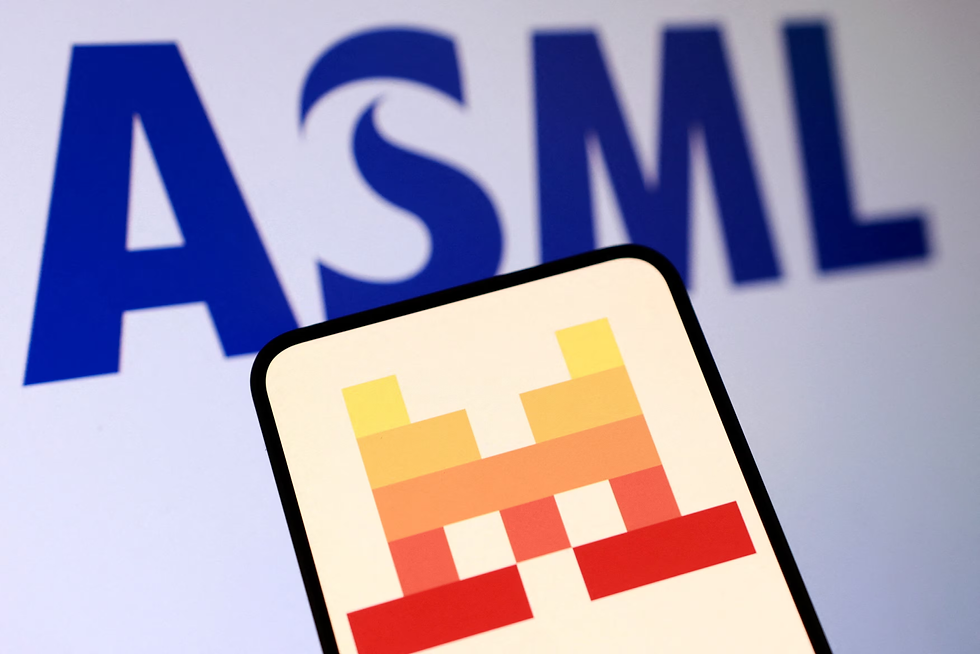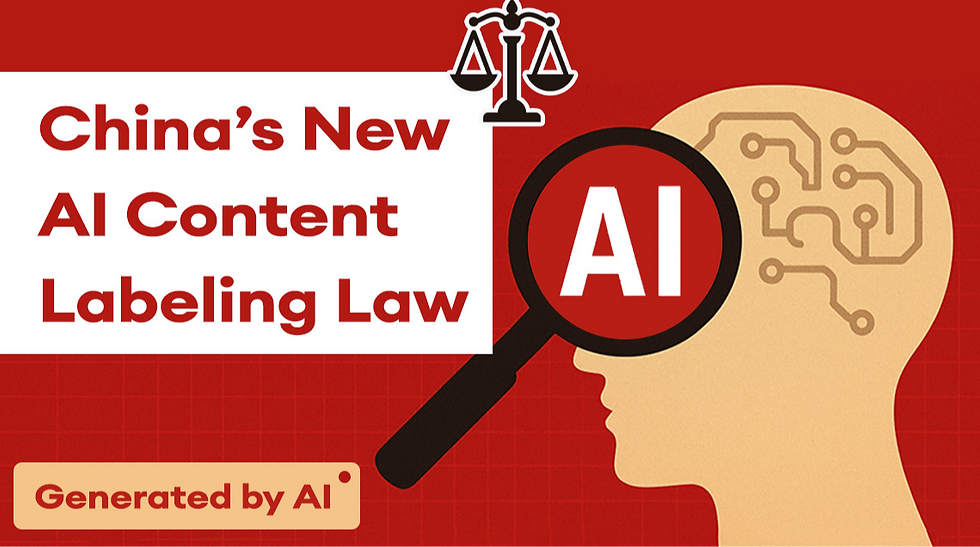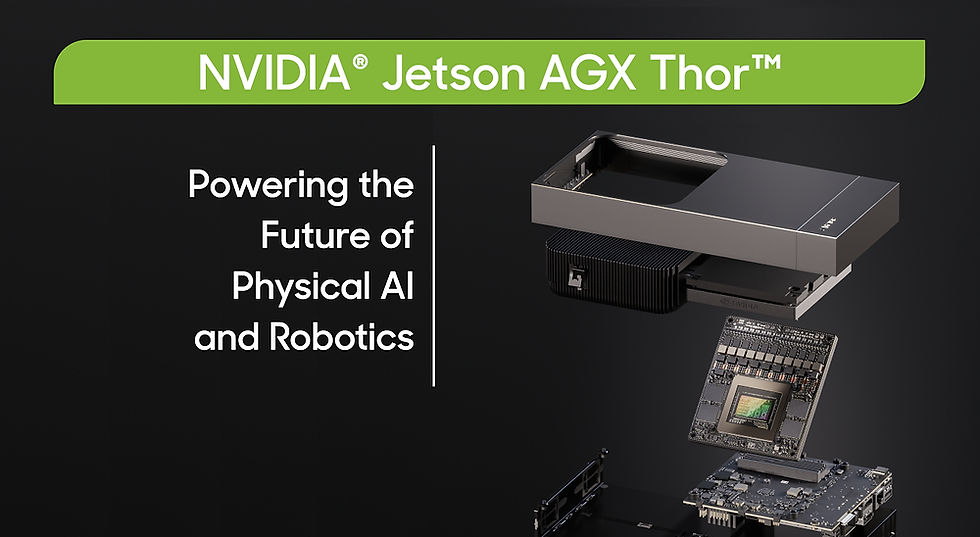ASML Acquires 11% Stake in Mistral AI, Joining Strategic Committee to Enhance AI-Semiconductor Synergy
- Olivia Johnson

- Sep 12
- 10 min read

Why this deal matters
ASML’s €1.3 billion investment for an 11% stake in Mistral AI and a seat on a strategic committee reframes how the semiconductor equipment leader intends to capture AI-driven gains inside the factory. The move makes headlines because it pairs one of the world’s most critical chip-equipment vendors with a fast-growing European AI model developer, creating a path to embed advanced generative and inference models directly into production tooling rather than only using them as external analytic services. Major outlets noted that the transaction is worth roughly €1.3bn (reported roughly as USD 1.5bn by some) and positions ASML as Mistral’s largest shareholder, a financial and strategic signal picked up by market coverage and analysis. The Financial Times framed the move as strategic and consequential for the industry, while Euronews highlighted the cross-border industrial implications.
Practically, the deal aims to accelerate the targeted integration of Mistral’s models into ASML’s semiconductor toolchain to improve throughput, predictive maintenance and pattern recognition in yield-critical processes. That technical rationale is central to ASML’s public explanation of the partnership. At the same time, critics question whether such a large minority investment represents the best capital allocation for ASML, turning this into both a technical collaboration and a debate about corporate strategy and regional tech sovereignty.
Feature breakdown — what features and integrations are planned

ASML described the partnership as designed to bring Mistral’s generative and inference capabilities into the company’s tool software and factory workflows, with a focus on improving performance, uptime and process accuracy. The joint announcement framed the collaboration around embedding models for predictive maintenance, anomaly detection and tool optimisation, and industry reporting emphasized that those capabilities would be targeted at lithography and related process steps where even small improvements translate to large value for customers. Tom’s Hardware summarized the investment and pointed to planned pilot work across ASML’s installed base, while analytical pieces in the press highlighted the strategic committee seat as a mechanism to align roadmaps rather than merely a financial holding. The Financial Times analysed how the committee role changes the nature of the partnership, enabling co-designed features aimed at real factory problems.
ASML will not be a passive investor: joining Mistral’s strategic committee implies ongoing joint roadmap alignment and a collaborative product-design process. That organizational intent matters because it signals integration work will be prioritized and directed toward tool-level deliverables rather than general-purpose model outputs.
Insight: The value here is practical — models tuned for lithography telemetry and metrology are far more useful on the factory floor than general-purpose models.
Product-level features likely to change after the investment
Lithography tool software: faster root-cause analysis and adaptive exposure-parameter tuning using Mistral models to reduce rework and scrap, reducing time spent diagnosing resist, overlay and focus issues. This capability is central to the partnership announcement. ASML described plans to integrate model-based optimisation into tool software.
Maintenance and uptime: predictive maintenance models that decrease unscheduled downtime and lift mean time between failures (MTBF) by spotting subtle precursor signals in tool telemetry, a point reinforced in industry reporting on pilot deployments. Tom’s Hardware noted pilot rollouts across ASML’s tool lines.
Specs and performance details — deal numbers and technical expectations

The headline number is explicit: ASML invested €1.3 billion for an 11% stake in Mistral AI, a valuation that some outlets translated to about USD 1.5bn. That makes ASML the single largest external shareholder in Mistral, according to the press release and corroborating coverage. The Financial Times reported that ASML’s role will include joining Mistral’s strategic committee rather than seeking operational control, which means ASML gains influential, but not unilateral, input over roadmap and integration priorities.
On performance expectations, both partners framed the deal around measurable factory improvements — increased throughput, higher yield and lower downtime — but public communications stopped short of publishing quantified KPIs. The announcement focuses on proof-of-concept integrations and pilot deployments as the near-term deliverables, leaving specific percentage improvements to be proven in customer environments. Industry analysts and coverage stress that ASML will first run pilots and that metric-backed rollouts are expected if those pilots succeed.
Short-term ROI centers on demonstrable efficiency gains from pilots that reduce scrap, shorten cycle times and limit unplanned tool downtime. Longer-term returns depend on making model-driven automation part of standard tool software and extending capabilities across product lines and customer fabs, potentially accelerating new-product introduction cycles by using models to simulate and optimise process recipes faster than with classical methods.
Bold takeaway: The strategic minority stake buys ASML influence and preferential integration access that could speed factory-level AI adoption, but the financial upside is contingent on pilots converting into reproducible KPI gains.
Numbers to watch
Investment baseline: €1.3 billion for 11% — this is the public valuation anchor for Mistral and a reference for future fundraises or M&A scenarios. ASML’s press release confirms the amount and stake.
Integration milestones: watch for proof-of-concept (POC) rollouts and pilot reports, followed by measurable tool-level KPI announcements on uptime, yield and throughput over the next 12–24 months, as suggested by the partners’ timetable and industry coverage. Euronews and Tom’s Hardware both flagged near-term pilot activity and staged rollouts, https://www.tomshardware.com/tech-industry/semiconductors/asml-makes-usd1-5billion-investment-in-mistral-ai-asml-becomes-the-largest-shareholder-for-the-french-ai-start-up.
Eligibility, rollout timeline and deal terms — how changes will reach fabs
ASML intends a phased rollout strategy: pilots first with major customers and then broader integration into ASML’s software releases and factory deployments. That staged approach comes from the parties’ public statements describing initial proofs of concept followed by scaled deployments if results meet expectations. The press release frames early pilots and joint engineering as the initial phase, and press coverage suggests customers with complex process stacks will be first in line for trials. Financial Times reporting also highlighted pilot-first sequencing to manage technical and commercial risk.
Timing signals from the announcement point to pilot activity and POC work in the near term, with public, KPI-backed rollouts likely within a 12–24 month window if pilots demonstrate repeatable gains. The deal is a strategic minority stake — ASML holds 11% and a strategic committee seat — not a full acquisition or an exclusive licensing agreement, which means Mistral can continue to work with others while aligning certain priorities with ASML. There is no public detail on pricing; initial integration is likely to be folded into ASML’s existing software and service contract models rather than emerging as a separate, immediately billable Mistral license to customers.
Rollout approach and implications for customers
ASML’s customers should expect pilot offers bundled with engineering support and staged software updates. Because semiconductor equipment is tightly controlled and often subject to rigorous change-management processes inside fabs, ASML will likely package AI features within validated software releases and managed service contracts to control risk and streamline qualification.
Comparison — how this differs from prior strategies and alternatives
ASML’s choice to buy into a specialist AI startup rather than build a comparable stack in-house reflects a broader industry trade-off: speed and domain expertise versus internal control and ownership. Building an equivalent AI team, model infrastructure and training pipelines internally would demand time, talent and operational expense; buying in gives ASML immediate access to trained models and a development partner. The Financial Times analysed this strategic posture, arguing that the committee seat and equity stake combine to produce influence without the cost and delay of a full acquisition.
Compared with licensing off-the-shelf models, the minority stake plus strategic-committee position provides stronger influence over model direction and priority features. That nuance matters for ASML because lithography and metrology use cases require tightly tuned models trained on domain-specific telemetry and images that general-purpose providers may not prioritize.
Criticism of the move has been loud in some corners. Observers at industry commentaries called the investment a “gross misallocation of capital,” arguing that €1.3bn might be better spent on R&D or capacity expansion if measurable returns are slow to appear. Semiconductors Insight published a forceful critique along these lines. Conversely, opinion pieces concerned about regional tech sovereignty viewed the investment as a deliberate action to strengthen a European AI champion and to keep critical AI capability aligned with European industrial actors. Spanish outlet Cinco Días highlighted sovereignty and strategic logic questions around the transaction.
Trade-offs in strategy
The pragmatic trade-off is clear: ASML trades some capital and an equity stake for rapid access to AI capability and influence over product roadmap, accepting dependency risks in return for speed. The alternative—developing in-house models—preserves internal control but tends to be slower and may replicate capabilities more expensively.
Real-world usage and developer impact — what changes for fabs and AI teams
For fab operators, the most tangible outcomes will be software hooks and pipelines that connect ASML tool telemetry, metrology outputs and manufacturing-execution-system data to domain-specific Mistral models. That means potentially shorter cycle times, fewer defects and reduced time spent on manual root-cause engineering if the pilots translate into production features. ASML’s announcement explicitly positions the partnership around deploying model-based functions at factory scale.
For AI and developer teams, the deal should increase demand for domain-tuned models and engineers who can bridge semiconductor physics and machine learning. Expect more roles focused on model explainability for metrology, feature-detection models trained on resist/overlay artifacts, and low-latency inference solutions suitable for edge deployment inside cleanroom environments. Tom’s Hardware anticipated collaboration and pilot work across ASML tool lines, which implies real engineering partnerships and upskilling.
Standards and compliance will matter: manufacturing AI must meet rigorous reliability and safety expectations, as reflected in industrial AI and manufacturing standards. ISO standards for AI and industrial systems provide a framework for validation and governance that parties will likely reference as they move from pilots to production.
Bold takeaway: Developers with combined skills in process control, lithography physics and robust ML engineering are likely to be in high demand as model-driven factory automation moves from experiment to product.
Ecosystem and talent effects
The transaction signals hiring and partnership opportunities across Europe’s AI and semiconductor supply chain, potentially accelerating tooling for model portability and edge inference that can run reliably within tight factory constraints.
Challenges and solutions
The partnership is not without plausible pitfalls. One challenge is scrutiny over capital allocation: critics worry the €1.3bn could be a poor use of cash if measurable returns lag. That concern has been voiced publicly in industry commentary and must be managed with transparent KPIs and phased investment commitments tied to delivery.
A second technical challenge is integration complexity: semiconductor tools are precision devices where software changes can have outsized impacts on yield and safety. The solution is conservative, incremental validation: rigorous joint validation programs, staged rollouts, and strict adherence to industrial and AI governance standards, including ISO guidance for AI systems in industrial contexts. The ISO standards referenced provide a baseline for that work.
Finally, there is the question of strategic clarity: some commentators described the transaction’s logic as “diffuse.” Opinion pieces urged clearer public milestones and tighter alignment between stated goals and measurable outcomes. A practical mitigation is for the strategic committee to publish time-bound milestones — pilot completion dates, target KPI improvements and planned customer rollouts — to convert strategic intent into demonstrable progress.
How to measure success
Success metrics should include reproducible improvements in tool uptime, yield and throughput for pilot customers; transparent reporting of those outcomes will be the quickest way to shift skeptical narratives.
FAQ — readers’ top questions now that the deal is announced

Q: How much did ASML pay and what percentage did it buy? A: ASML paid €1.3 billion for an 11% stake in Mistral AI, a transaction that makes ASML Mistral’s largest external shareholder according to the press release.
Q: Does ASML now control Mistral AI? A: No. The investment is a strategic minority stake accompanied by a seat on Mistral’s strategic committee, giving ASML influence over integration priorities and roadmap alignment but not full operational control. The announcement makes this distinction explicit.
Q: When will ASML customers see AI-driven improvements in tools? A: The partners say pilots and proof-of-concept work are the near-term focus, and broader KPI-backed rollouts are likely within 12–24 months if pilots succeed. Coverage in the press highlighted staged pilot deployments followed by scaled rollouts.
Q: Will customers pay more for AI-enabled ASML tools? A: There is no public pricing announced. The most likely commercial path is inclusion of capabilities within ASML’s existing software and service contracts rather than an immediate, standalone Mistral licensing fee, at least initially. That is the framing in ASML’s public materials.
Q: Is this mainly a political move to bolster European AI sovereignty? A: Observers see a sovereignty element — the deal strengthens a European AI company in partnership with a Dutch industrial champion — but ASML’s stated rationale focuses on technical integration to improve factory outcomes. Both the strategic and political dimensions were discussed in commentary and opinion pieces, https://www.ft.com/content/613b9c71-827b-4bb0-a0d9-5d4117878d88.
Q: What are the main risks? A: The prominent risks are concerns about capital allocation and return on investment, the technical difficulty of integrating models into precision equipment, and the need to meet industrial reliability standards — all of which proponents say can be mitigated by phased pilots, clear KPIs and standards-aligned validation. Industry critiques and standards guidance point to these very risks and mitigations, https://www.iso.org/standard/76528.html.
Q: Will Mistral continue to serve other customers and cloud providers? A: Public statements framed the deal as a strategic partnership, not an exclusivity agreement, so Mistral is expected to continue broader engagement while prioritizing certain integrations with ASML. The press release and coverage emphasize partnership and collaboration rather than exclusivity.
Looking ahead: ASML, Mistral AI and the future of AI-semiconductor synergy

The ASML–Mistral tie-up is a clear signal that semiconductor leaders see AI not merely as an analytics add-on but as an integral part of the control and optimisation fabric for modern fabs. ASML’s €1.3 billion stake and strategic committee role places it in a position to co-design AI features targeted at yield and uptime improvements, and that blended hardware‑plus‑model approach could shift expectations for how equipment vendors deliver value.
In the coming months, attention will focus on whether pilot programmes produce reproducible KPI improvements and how quickly those gains are packaged into standard software releases and services. If ASML and Mistral prove that domain-tuned models reduce scrap, shorten NPI cycles and increase tool availability in measurable ways, the partnership could catalyse a broader industry shift toward software-driven equipment differentiation. On the other hand, if integration proves slow or pilots underdeliver, public and investor scrutiny about capital allocation will intensify — a realistic trade-off that both companies must manage openly.
For practitioners, the immediate opportunities are concrete: fab operators should prepare for controlled pilots that require telemetry integration and change-management processes, while AI developers with domain knowledge of lithography, metrology and process control will find new collaboration and hiring avenues. Standards bodies and industrial governance groups will also play an important role as the partnership scales features from lab to cleanroom, ensuring that safety, explainability and reproducibility guide deployment.
What should readers watch? Look to strategic-committee updates, published pilot metrics tied to yield and uptime, and announcements that move features from POC to product within the next 12–24 months. Those milestones will show whether the deal was a fast track to valuable factory intelligence or an ambitious experiment whose payback needs more time.
Ultimately, this transaction underscores a larger industry inflection: hardware vendors are increasingly thinking like software platforms, and AI is the connective tissue that might justify that shift. The path forward is neither guaranteed nor linear, but it is one of the clearest opportunities in years for AI to reshape how chips are produced — and for equipment makers to capture new types of value beyond optics and mechanics.


